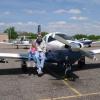-
Posts
1,832 -
Joined
-
Last visited
-
Days Won
4

mooniac15u replied to BodyshopDave's topic in Modern Mooney Discussion

mooniac15u replied to R Van Dyck's topic in Vintage Mooneys (pre-J models)

mooniac15u replied to R Van Dyck's topic in Vintage Mooneys (pre-J models)

mooniac15u replied to A_Eagle's topic in Vintage Mooneys (pre-J models)

mooniac15u replied to Sethg52000's topic in Vintage Mooneys (pre-J models)

mooniac15u replied to flyboy0681's topic in Miscellaneous Aviation Talk
We have placed cookies on your device to help make this website better. You can adjust your cookie settings, otherwise we'll assume you're okay to continue.